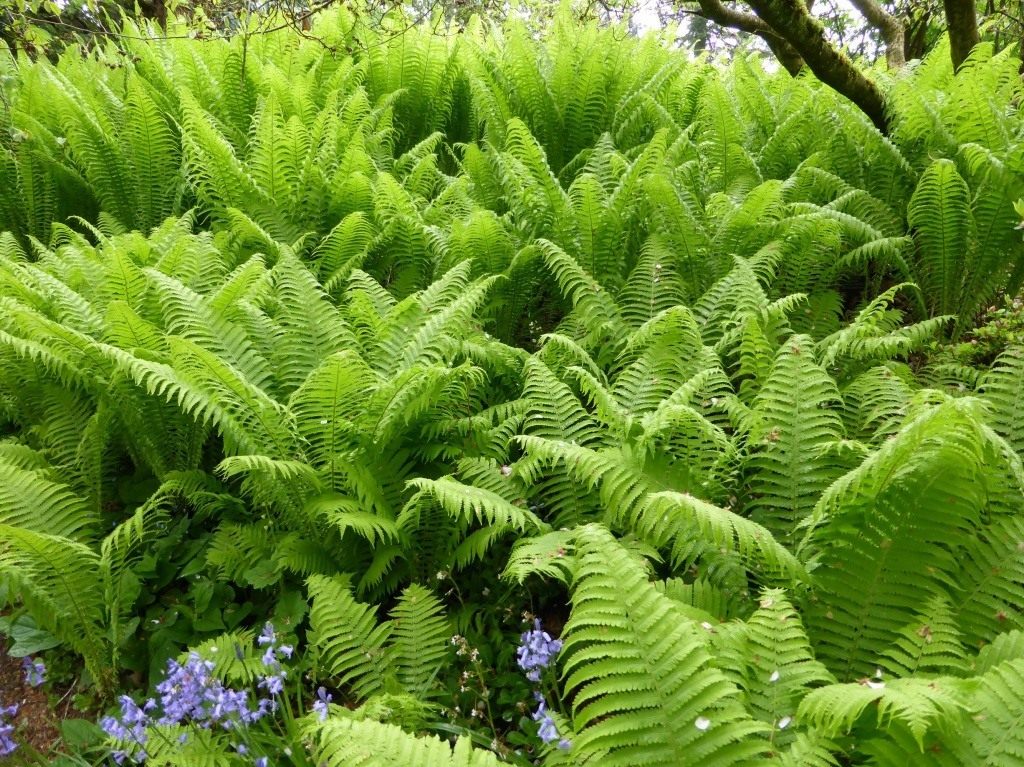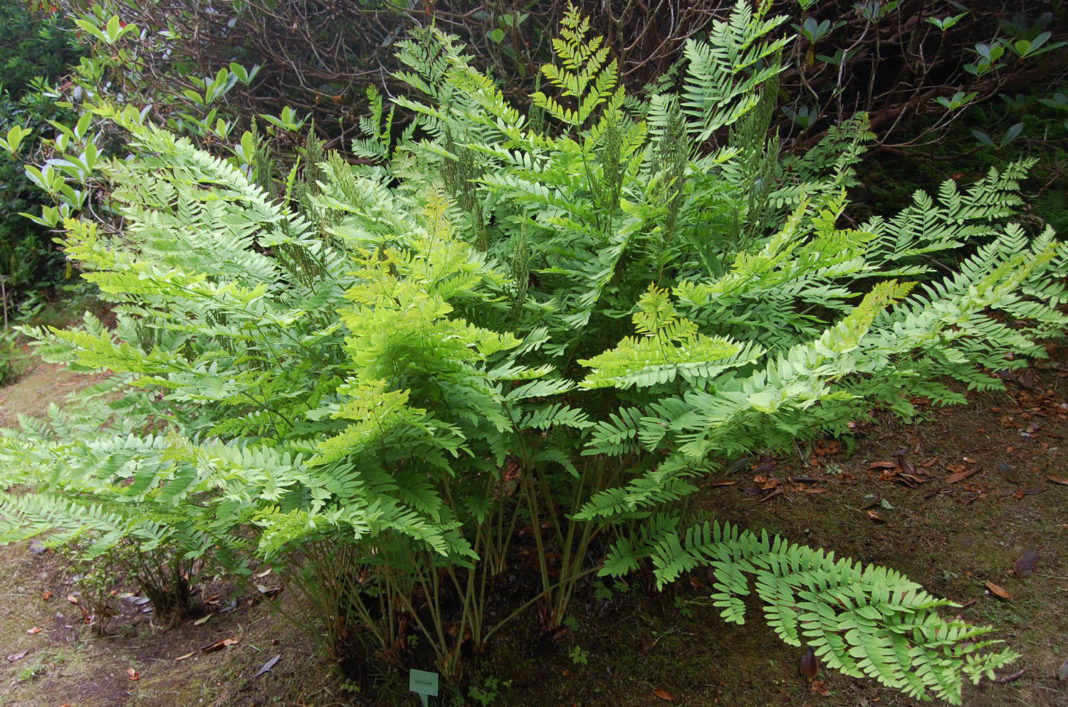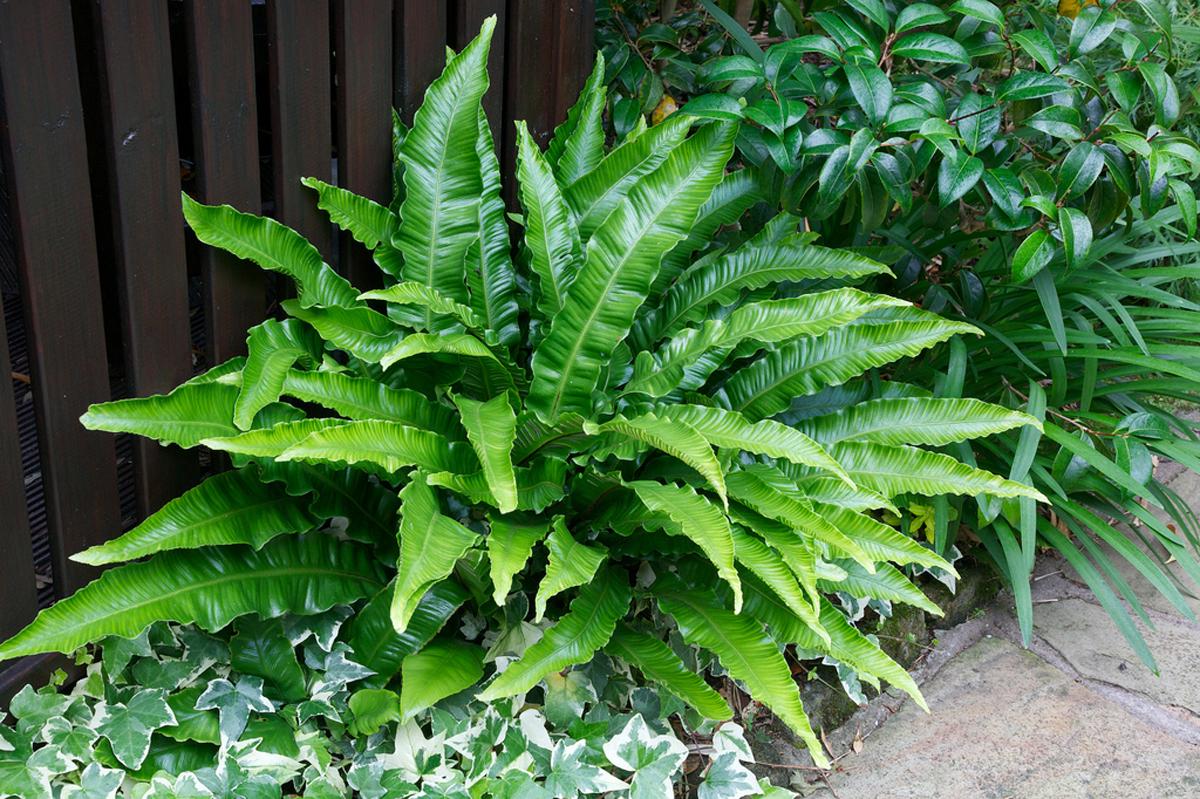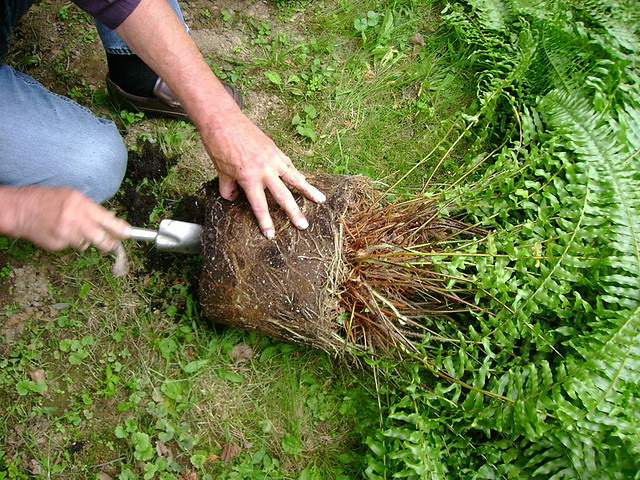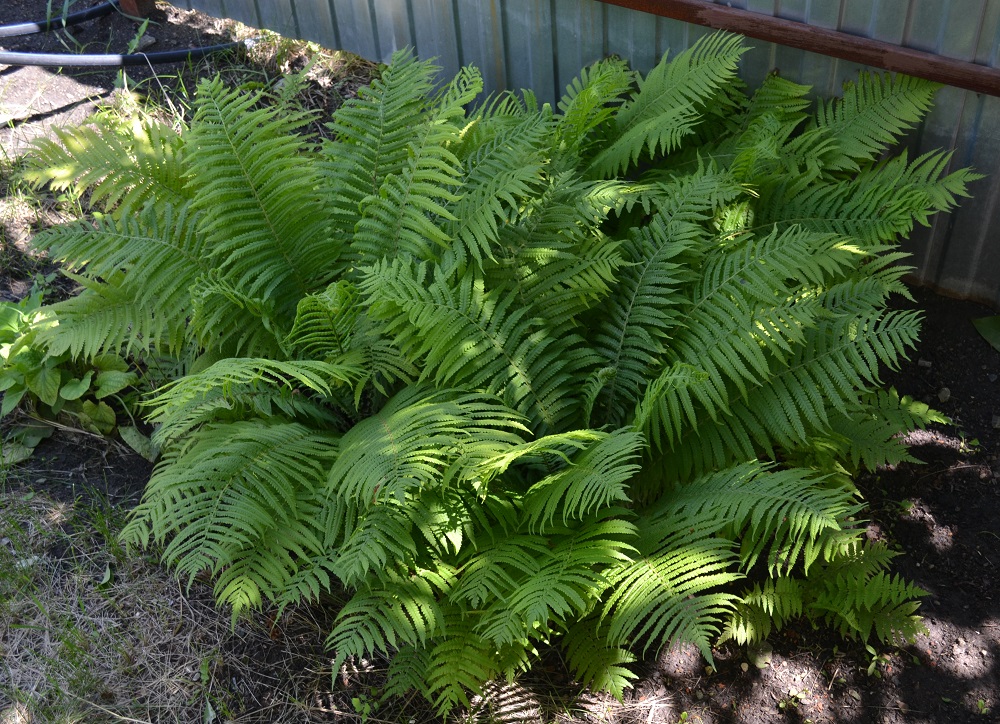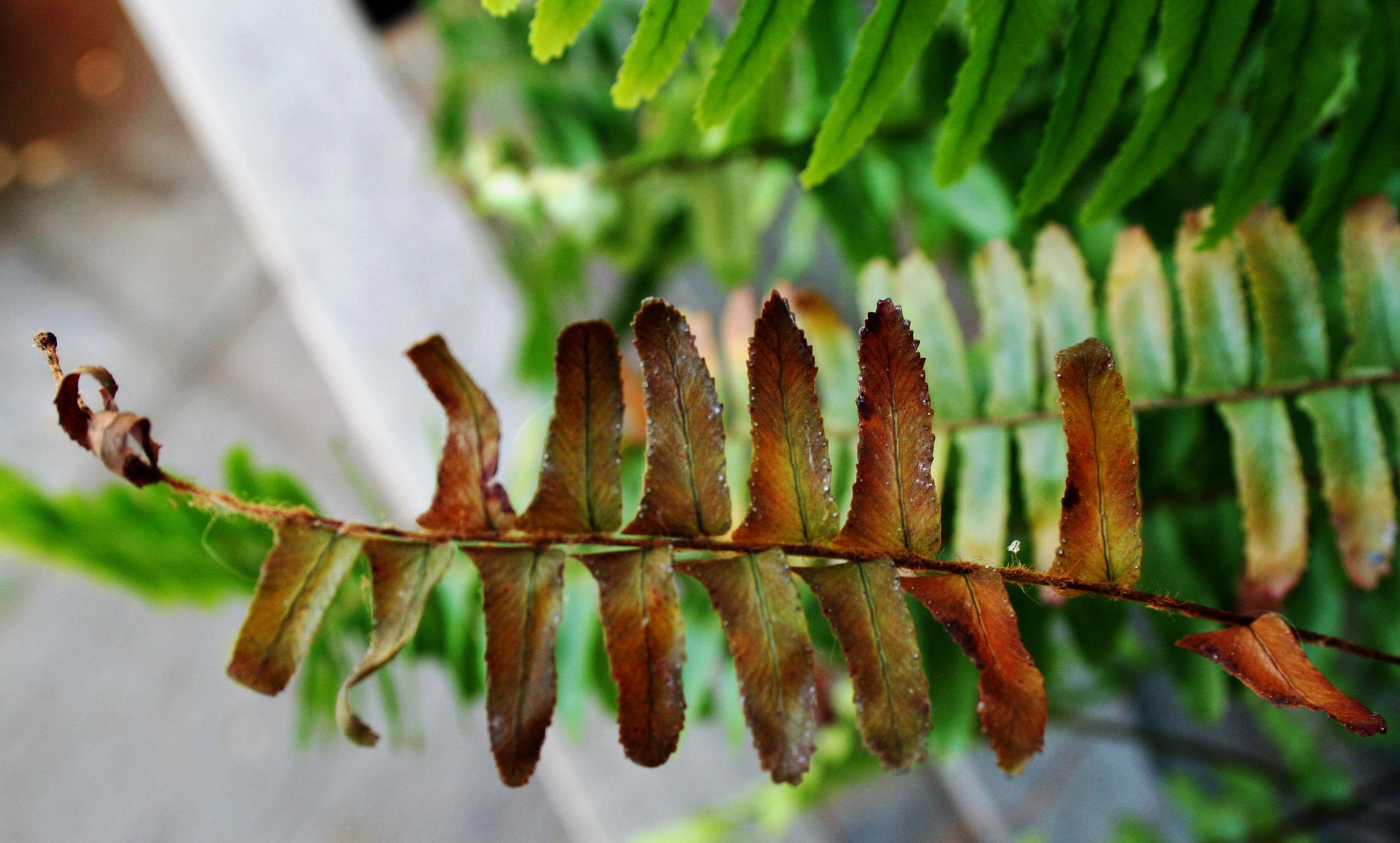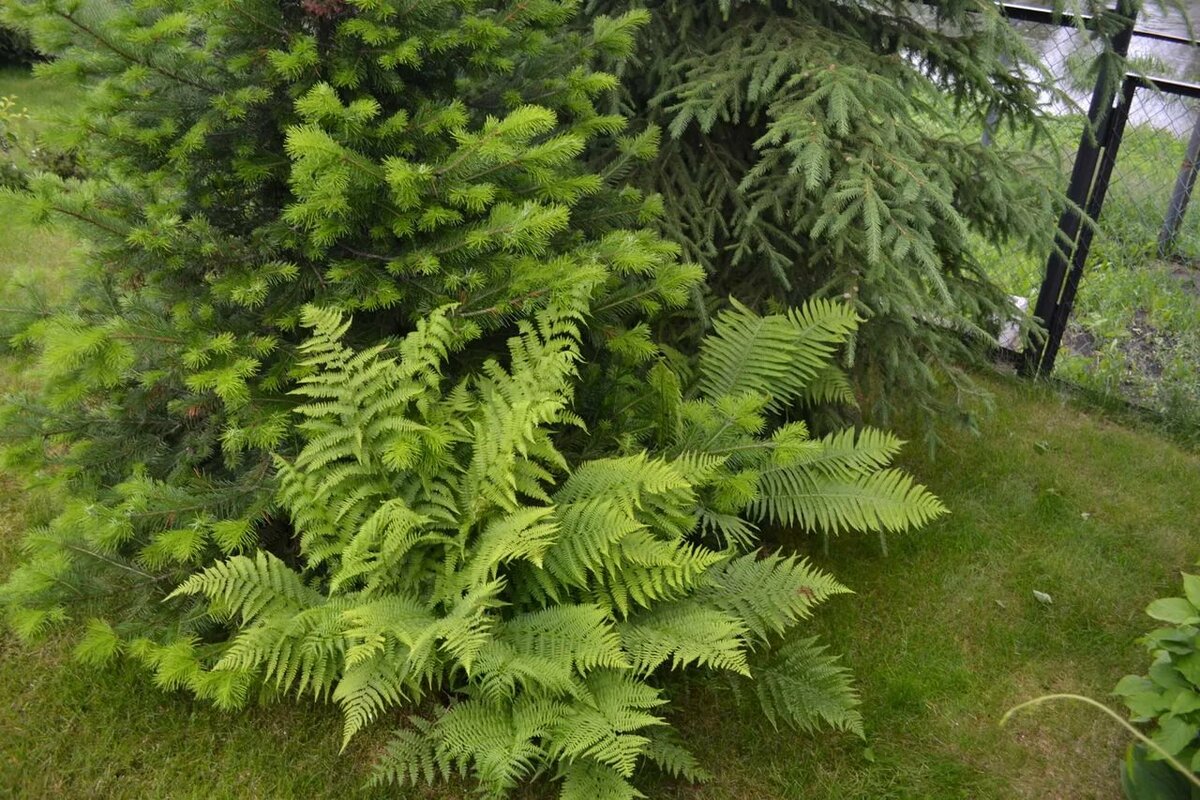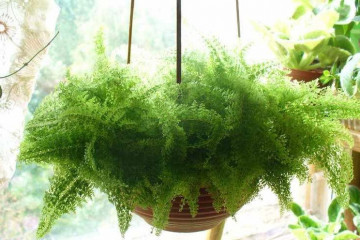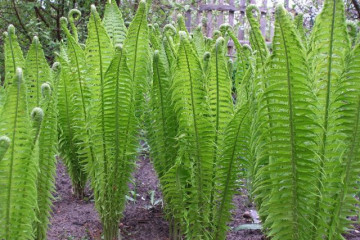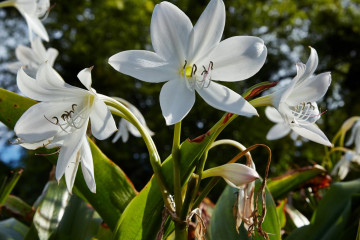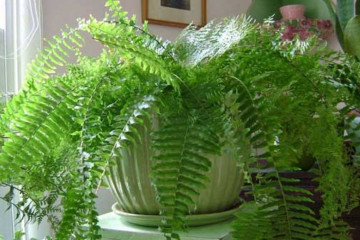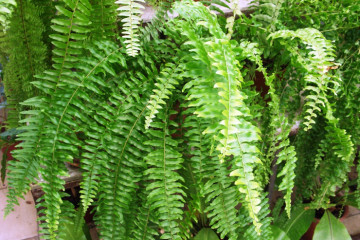Garden fern - planting and care
Content:
A fern in the garden is ideal for growing as it has a decorative appearance and is adaptable to almost any weather conditions. This deciduous plant is one of the oldest surviving crops. There are many varieties of fern, many of which are widely used in landscape design.
Garden fern - what kind of plant is it, general information
Garden fern is now often found in personal plots, dachas or in public parks. The plant has a history of 400 million years. It must be admitted that during this period it outwardly changed little.
Combination with other plants in landscape design
Lacy frond of ornamental garden fern will decorate any plant composition. These plants look especially beautiful with conifers and flowers with small buds.
Fern in the country or in the park is usually combined with the following ornamental plants:
- lilies of the valley;
- asters (it is best to plant flowers in rich and dark shades);
- badan;
- hosts;
- bruner.
What types of fern are suitable for growing in the garden
To plant a garden fern in your garden plot, you need to choose varieties with unusual and complex frond patterns.
Male shieldworm
In addition to its high decorative qualities, the male shieldworm is known for its healing properties. It has short-petioled plates 60 cm long. The fronds of a beautiful rich green color form a lush dense crown. The plant can be found on almost all continents of the planet.
Female kochedyzhnik
The street fern of the Kochedzhnik variety grows in shady places. In natural nature, it can be found in dense forests. The plant has a powerful rhizome, reaching almost 1 m in length. The kochedyzhnik's crown is very dense, so it is highly valued in landscape design. A big plus of the species is its ability to grow without transplants in one area for almost 15 years.
Bush's shield maker
Another name for Bush's thyme is tolstokornevischny, a plant native to the Far East. The shrub reaches 1.5 m in height and has a short, thick root.
Asplenium
Unusual and unlike other fern species is the Asplenium species.Unlike the rest of its relatives, it reaches for the sun and can grow on the trunk of trees, as it is an epiphytic plant. Whole leaves are elongated and lance-shaped, growing from a single rosette. The edges of smooth plates are wavy.
Mnogoryadnik
The homeland of the mulberry tree is the deciduous forests of Europe, the Caucasus and North Asia. The plant does not have a dense crown, but its leaves are very interesting. Each plate consists of twigs, on which are located parallel leaves of the same size no more than 1 cm long.
Breeding methods for garden ferns
Fern is a spore-like plant, but gardeners do not plant it with the help of spores, as this is a long and complex process. Fern propagation at home can be done in other ways:
- Rooting of rhizome whiskers. This method is only suitable for varieties with appendages creeping on the ground. They need to be buried in the ground to a depth of 5-8 cm and watered well.
- Division of an adult bush. The procedure is best done in the spring. To do this, you need to dig out the whole plant and divide it into 3-4 equal parts with a sharp knife, together with the rhizome. Each new bush must be planted in separate holes.
- Brood buds. Some cultivars have small raised surfaces on the underside of the leaves, which can be detached and placed in moss or moistened peat. From above it is necessary to cover everything with a film and put it in a dark place. After a few months, sprouts will appear from there.
Algorithm of how to transplant a fern in the country in open ground:
- Dig a hole a third deeper than the length of the rhizome.
- It is recommended to cover the bottom of the hole with a layer of drainage material (fine gravel, pebbles, expanded clay or brick chips).
- Next, lay the same layer of nutrient substrate rich in organic fertilizers.
- Place a seedling in it and cover it with the remaining soil mixture.
- Having tamped the ground, it is necessary to water the bush abundantly.
Planting and caring for an ornamental garden fern
Although the bush is picky to grow, it is necessary to adhere to some rules in the activities for planting and caring for the fern in the garden. How to plant a fern outdoors has been explained above. After planting the crop, it is recommended to mulch the area with crushed tree bark, fine gravel or any other material that does not absorb moisture.
How to choose a place on the site for a garden fern
Before planting a fern in your garden, it is important to find the right place to grow it. Plots near buildings, especially houses and fences, are good for this. If there are many trees with a large crown in the garden, then you can plant the bushes in their shade.
How to water a garden fern
The plant will have to be watered often, especially in the first year of life. The procedure in the summer must be carried out once a week with soft, settled water. In a hot period of time, it is best to water in the evening so that the fern leaves do not get burned.
Soil care
After planting the fern in the garden, it is necessary to look after not only the bush itself, but also the soil on which it grows. First of all, you should take care of regular loosening and weeding of the earth. These two activities can be combined, but by mulching the ground in advance, you can save yourself from these problems.
Fern feeding in the garden
There is practically no need to feed the shrub.It is best fertilized with complex fertilizers intended for all types of ferns. You need to feed the bush once a month by introducing the drug in liquid form.
Fern preparation for wintering
Before sending a fern for wintering, it is necessary to prepare it for this procedure in late autumn. First, the last fertilizer of the season should be applied: a complex mineral preparation rich in nitrogen, potassium and phosphorus, as well as organic matter.
The next step is cropping. You need to cut off all the plates at the root. After that, you should start updating the mulch. It is necessary to remove the old material carefully so as not to damage the rhizomes, which are practically on the surface of the soil in ferns.
The last step is shelter. Not all species of dwarf plant need this procedure. For example, kochedzhnik and bracken are highly resistant to frost, so they can endure the winter without shelter.
Diseases and pests
If you regularly take care of the garden fern, then it will not get sick for the entire period that will grow on the site. However, unfavorable conditions and carelessness of the owner often contribute to the appearance of insect pests and diseases on it.
Diseases to which many varieties of garden fern are susceptible:
- Anthracnose. It appears as dark spots on the leaves. They are especially numerous at the edges of the plates.
- Root rot. It appears due to waterlogging of the soil and the lack of measures to loosen it. The signs of rot are yellowing of the leaves and their subsequent blackening.
- Gray rot. With this disease, the plates are covered with soft, like cotton wool, gray mold. The disease is infectious in nature, therefore it is dangerous for a number of growing plants.
- Spotting. Formed on ferns with whole leaves. It is characterized by soft brown patches that grow in size over time until they cover the whole leaf.
Gardeners are advised to periodically spray the ferns with a weak solution of the agent as a preventive measure.
Pests also often infect bushes, including:
- Whitefly. Small white flies that gather on the back of the plates. Their presence can be determined in a simple way - shake the bush. If a flock of snow-white midges flies up, then it is necessary to save the fern. To get rid of them, you should periodically shake the plant and spray it with insecticides in order to destroy the remaining larvae.
- White suckers. In appearance they are very similar to small white worms. However, these insects are capable of jumping. They are in the ground and often harm the root system, which is why the plant begins to wilt and stops growing.
- Mealybug. The main symptom is the appearance of white "cotton wool" on some parts of the frond.
In some cases, the bush can suffer from nematodes, spider mites, aphids, which also need to be eliminated with the help of insecticides.
Garden fern is in great demand in landscape design. There are an incredible variety of varieties of this plant, so choosing a bush to your taste is not difficult. The fern is not capricious in care, so even novice gardeners can grow it on their site.
